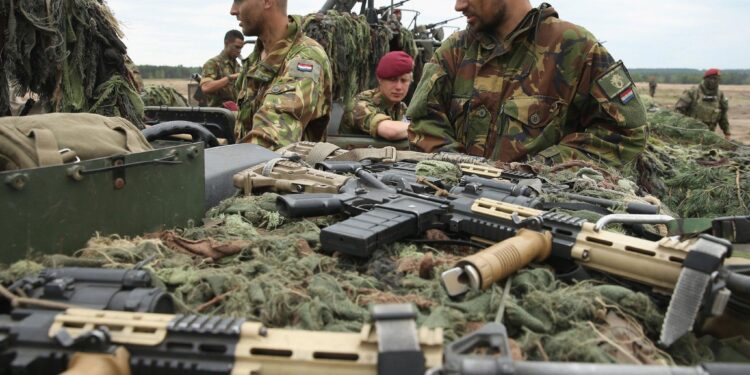The Netherlands has announced plans to deploy Dutch soldiers to Poland this December as part of a broader NATO mission aimed at enhancing regional security amid rising tensions in Eastern Europe. The deployment underscores the country’s commitment to collective defense and cooperation within the alliance, as concerns over stability along NATO’s eastern flank continue to grow. This latest move reflects ongoing efforts to support Poland and other Eastern European allies in deterring potential threats and maintaining peace in the region.
Dutch Troops to Strengthen NATO Presence in Poland Amid Rising Tensions
Starting December, a contingent of Dutch military personnel will be stationed in Poland as part of NATO’s bolstered defense strategy in Eastern Europe. This deployment underscores the Netherlands’ commitment to the alliance amid escalating geopolitical tensions in the region. The Dutch troops will operate alongside allied forces to enhance surveillance, conduct joint training exercises, and reinforce the overall readiness of NATO’s eastern flank.
The mission’s scope includes:
- Enhanced reconnaissance to monitor border areas and potential threat vectors
- Joint drills with Polish and NATO forces to improve interoperability
- Logistical support facilitating rapid response and resource sharing
| Unit | Personnel | Role |
|---|---|---|
| Infantry Platoon | 30 | Ground Operations |
| Armored Support | 12 | Mobile Defense |
| Reconnaissance Team | 15 | Surveillance & Intel |
| Logistics Squad | 20 | Supply & Support |
Strategic Objectives and Operational Challenges for Dutch Forces in Eastern Europe
The upcoming deployment of Dutch forces to Poland underscores a dual focus: strengthening NATO’s eastern flank and enhancing interoperability with allied units. Key strategic goals include deterrence against potential aggression, ensuring rapid response capabilities, and reinforcing regional security alongside Polish forces. This mission also prioritizes intelligence sharing and robust communication networks to facilitate coordinated defense efforts in a complex geopolitical landscape.
Operationally, the Dutch troops face several challenges that demand adaptability and resilience. These include navigating diverse terrains and climatic conditions, maintaining logistical support over extended supply lines, and operating within a multinational command structure. Moreover, forces must integrate advanced technologies while managing cyber threats and information warfare tactics. The table below summarises core challenges and corresponding Dutch military approaches:
| Operational Challenge | Dutch Response Strategy |
|---|---|
| Harsh winter climate | Specialized cold-weather training & gear |
| Logistical complexity | Pre-positioned supply hubs and agile transport |
| Multinational coordination | Joint exercises and unified command protocols |
| Cyber and electronic warfare threats | Enhanced cyber-defense units & encryption |
Recommendations for Enhancing Coordination and Support in Multinational Military Missions
Effective collaboration in multinational military deployments hinges on clear communication channels and standardized operational procedures. Establishing joint command centers equipped with interoperable technology can significantly reduce misunderstandings and ensure swift decision-making. Furthermore, fostering regular joint training exercises is vital; it not only builds trust among allied forces but also hones the ability to respond cohesively under pressure. Recognizing and respecting cultural and procedural differences among partner nations helps enhance mutual understanding, which is crucial when operating in complex environments.
Support structures must also be tailored to address both logistical and human factors. Prioritizing mental health resources, streamlined medical aid, and adequate rest cycles contributes to maintaining troop readiness over extended missions. Additionally, leveraging real-time intelligence sharing and synchronized supply chains ensures operational continuity. The table below summarizes key focus areas and actionable steps for improving coordination and support:
| Focus Area | Actionable Steps |
|---|---|
| Communication | Implement secure, cross-national channels and multilingual briefings |
| Training | Conduct regular joint exercises and simulation drills |
| Logistics | Synchronize supply chains and equipment interoperability |
| Personnel Support | Enhance mental health services and rest rotation plans |
Final Thoughts
The deployment of Dutch soldiers to Poland underscores the Netherlands’ ongoing commitment to NATO’s collective defense efforts amid heightened regional tensions. As December approaches, focus will remain on ensuring coordination and readiness among allied forces in Eastern Europe. Further developments will be closely monitored as the situation evolves.
















